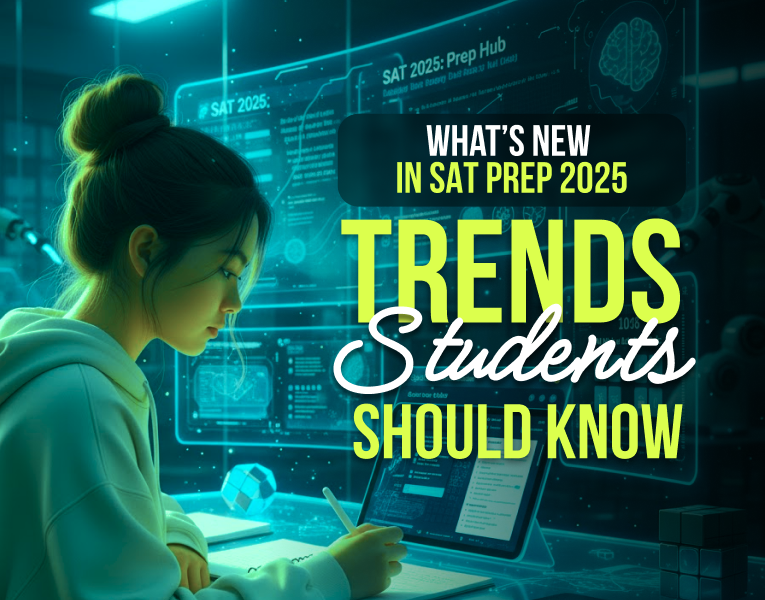“Why do all the answers sound right on Digital SAT reading?”
“Why does the passage Digital SAT say one thing, but the question asks something else?”
“Am I overthinking… or underthinking?”
If you’ve searched any of that, you’re not alone. Inference questions are one of the most confusing and most searched parts of the Digital SAT reading section. Students scroll YouTube shorts, save Instagram reels, and still walk into practice tests feeling unsure.
Let’s slow this down and make it feel manageable. No heavy theory. No literary jargon. Just a clean, student-friendly way to crack inference questions with confidence.
Why inference questions feel so hard on the Digital SAT
Inference questions don’t ask you what the passage says.
They ask you what the passage quietly proves.
That’s where things get tricky.
1. The answers are designed to feel tempting
Every option sounds reasonable.
Some repeat passage words.
Some “feel smart.”
But only one is fully supported by the text.
2. The passages are short but dense
Digital SAT passages are shorter than the old SAT, but they pack more meaning into fewer lines. Miss one sentence, and the inference collapses.
3. Students rely on instinct instead of evidence
Many students pick answers based on:
- What could be true
- What usually happens
- What feels logical in real life
The Digital SAT doesn’t reward that. It rewards text-based thinking.
A simple 4-step framework to master inference questions
Think of inference questions as a quiet detective game. Here’s a framework you can use on every single question.
Step 1: Read the question first (yes, first)
Before rereading the passage, check what the question wants.
- Is it asking what the author suggests?
- What can be inferred?
- What assumption is supported?
This tells your brain what evidence to hunt for.
Step 2: Find the “anchor line”
Go back to the passage and locate:
- A sentence that implies something
- A contrast word (however, although, yet)
- A cause-and-effect relationship
Inference answers always have an anchor. No anchor = no inference.
Step 3: Rephrase the inference in your own words
Before looking at options, pause.
Ask yourself:
“If I had to explain this to a friend in one sentence, what would I say?”
That sentence is your filter.
Step 4: Eliminate aggressively
Correct inference answers are:
- Fully supported by the text
- Slightly boring
- Very specific
Wrong ones usually:
- Go too far
- Add new ideas
- Sound dramatic or emotional
How to practice Digital SAT inference questions smarter (not harder)
Random practice won’t fix inference problems. Structure will.
Here’s a weekly digital sat prep rhythm that works:
- 2–3 days: Focused digital sat reading practice
- Only inference and evidence-based questions
- 1 day: Timed mini set (10–12 questions)
- Practice decision-making under pressure
- 1 day: Review day
- Ask: What line proved the correct answer?
Mix official-style questions with a digital sat mock test environment so your brain learns the real exam rhythm, not just isolated questions.
Common inference mistakes (and quick fixes)
Mistake 1: Choosing answers that are “true in real life”
Fix: If the passage didn’t prove it, it doesn’t count.
Mistake 2: Falling for extreme language
Words like always, never, completely are red flags.
Mistake 3: Ignoring one key sentence
Inference often hinges on a single line. Slow down there.
Mistake 4: Overthinking simple answers
If it feels obvious and text-backed, it’s probably right.
Why TutorWand mock tests change the game
Inference questions become easier when practice feels real.
That’s where TutorWand’s digital SAT mock test system makes a difference.
Instead of random questions, you get:
- Full-length, exam-style online SAT mock tests
- Digital SAT reading questions that mirror real difficulty
- Clear performance insights so you see patterns, not just scores
Students often start feeling:
- Confused
- Unsure why answers are wrong
- Stuck at the same reading score
After a few structured mock tests, that shifts to:
- “I know where to look in the passage.”
- “I can eliminate faster.”
- “Inference questions don’t scare me anymore.”
That confidence matters. A lot.
Turn inference questions into your strength
Inference questions aren’t about being “good at English.”
They’re about learning how the Digital SAT thinks.
With a clear framework, focused digital sat practice, and realistic digital sat mock test experience, this once-scary topic can become one of your easiest scoring opportunities.
If you’re serious about leveling up your digital sat prep, try practicing inference questions inside a real exam-style environment with TutorWand. The clarity you gain is the kind that sticks on test day.
One skill. One framework. One confident step forward.














